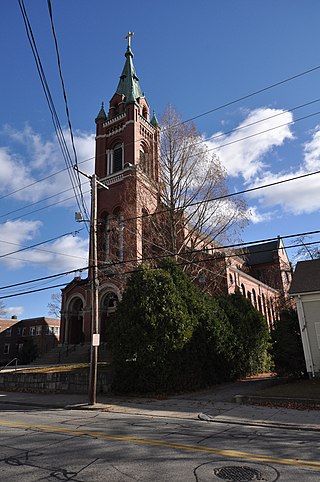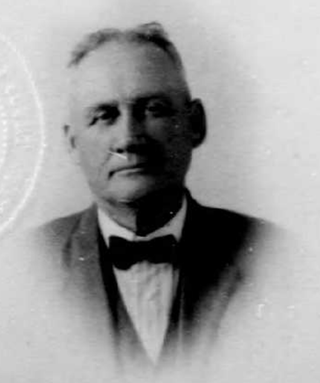
Peabody & Stearns was a premier architectural firm in the Eastern United States in the late 19th century and early 20th century. Based in Boston, Massachusetts, the firm consisted of Robert Swain Peabody (1845–1917) and John Goddard Stearns Jr. (1843–1917). The firm worked on in a variety of designs but is closely associated with shingle style.

Charles Henry Owsley (1846–1935) was an English-born American architect in practice in Youngstown, Ohio, from 1872 until 1912.

Marcus Fayette Cummings was an American architect active in the Capital District region of the U.S. state of New York. Born in Utica, he later established his practice in the city of Troy, where many of his buildings are located in the Central Troy Historic District and listed on the National Register of Historic Places. Firm listed as Cummings & Brit in the Gazetteer and Business Directory of Rensselaer County, N. Y., for 1870–71. In 1891 he made his son, Frederick, a partner in the office, and promptly retired to Vineyard Haven, Massachusetts, on Martha's Vineyard. He maintained only a financial interest in the office of M. F. Cummings & Son, which would last into the 1930s.

Warren R. Briggs (1850–1933) was an American architect who worked in Bridgeport, Connecticut.

Raymond F. Almirall (1869–1939) was an American architect of the Beaux-Arts period, practicing in New York City.

Walter F. Fontaine was an American architect of French Heritage from Woonsocket, Rhode Island.

Link & Haire was a prolific architectural firm in Montana, formally established on January 1, 1906. It designed a number of buildings that are listed on the National Register of Historic Places.

Alexander Blount Mahood was a Bluefield, West Virginia-based architect.

William R. Walker & Son was an American architectural firm in Providence, Rhode Island, active during the years 1881 to 1936. It included partners William Russell Walker (1830–1905), William Howard Walker (1856–1922) and later William Russell Walker II (1884–1936).

William F. Kurke (1889–1965) was a prolific architect in North Dakota.

Martin & Hall was the architectural partnership of Frank W. Martin and George F. Hall (1866–1928). It was based in Providence, Rhode Island.

James Miller Creighton was an American architect who practiced in Phoenix, Arizona from the 1880s to the 1920s. He is considered to be one of Arizona's first architects.

John James Huddart (1856–1930), known usually as John J. Huddart, was a British born and trained architect who practised out of Denver, Colorado in the United States. At the end of the Nineteenth century he was one of Denver's leading architects, known for his work on public buildings and as a courthouse architect. His practice lasted from 1882 to 1930 and commissions included Charles Boettcher House in Denver, Colorado's Fort Morgan State Armory, Denver's Filbeck Building, and six of Colorado's county courthouses.

Albert W. Fuller (1854-1934) was an American architect practicing in Albany, New York.

Wilfred Elizur Griggs (1866–1918) was an American architect from Waterbury, Connecticut.

Cutting, Carleton & Cutting was an American architectural firm, with offices in Worcester, Massachusetts, active from 1895 to 1932.

Ernest C. S. Holmboe (1873–1954) was an American architect best known for his work in West Virginia.

John Ashton (1861-1953) was an English-born American architect from Lawrence, Massachusetts.

A. C. Lyons (1873-1942) was an American architect from Fairmont, West Virginia.

John P. Eisentraut (1870-1958) was an American architect most closely associated with South Dakota. Eisentraut designed a number of buildings, including Carnegie libraries and courthouses, several of which are listed on the National Register of Historic Places. He was one of South Dakota's leading architects during the first quarter of the twentieth century.























